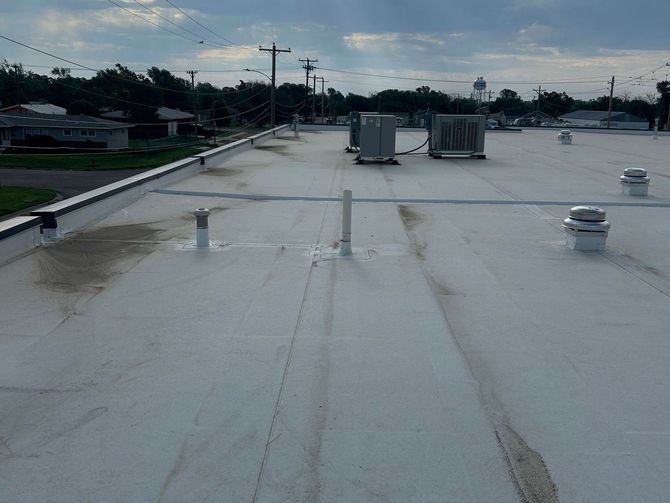Flat roofs have gained popularity in recent years for commercial properties due to their numerous advantages, such as cost savings, low-maintenance needs, and versatility. This article highlights why flat roofs are a smart investment for your commercial building, offering long-term savings and functionality.
Advantages of Flat Roofs for Commercial Buildings
One of the biggest advantages of flat roofs for commercial buildings is their versatility. They are quicker to install than traditional pitched roofs, which reduces labor costs and installation time. This makes them a more efficient choice for commercial builders.
Another major benefit of flat roofs is their ability to maximize available space. The flat surface can be utilized for purposes like placing HVAC systems, solar panels, or even developing rooftop gardens. This is especially valuable for commercial buildings in crowded urban environments.
Flat Roof Materials: EPDM, TPO, and PVC
When it comes to flat roofing, there are several high-quality materials to choose from, each offering unique benefits. Here are the most commonly used materials for commercial flat roofs:
EPDM (Ethylene Propylene Diene Monomer)
EPDM is a synthetic rubber material that is known for its durability and weather resistance. It’s particularly effective in extreme weather conditions, making it a great option for flat roofs in both hot and cold climates. EPDM is also easy to install and maintain, providing long-term protection against leaks.

TPO Roofing: Reflective and Durable
TPO (Thermoplastic Olefin) is a highly reflective material that helps improve energy efficiency by minimizing heat absorption. It is resistant to UV rays and ozone, which makes it a great option for buildings in sunny areas. TPO is also known for its puncture resistance and ability to withstand harsh weather conditions.
PVC (Polyvinyl Chloride)
PVC is a strong and durable material that resists water, fire, and chemicals. It’s long-lasting and especially suited for high-traffic areas because of its resistance to wear and tear. PVC provides excellent protection against the elements and is ideal for flat roofs requiring extra durability.
How to Maintain Your Flat Roof for Longevity
While flat roofs are durable, they still require regular maintenance to ensure their longevity. Here are a few maintenance tips to keep your commercial flat roof in top condition:
- Inspect your roof regularly for debris, such as leaves or branches, that can block drainage systems.
- Keep gutters and downspouts clear of blockages to avoid water accumulation.
- Arrange for yearly roof inspections with a qualified roofing professional to detect any wear and tear.
- Prompt repairs are essential, particularly if cracks or punctures in the roofing material are found.
Why Flat Roofs Are Cost-Effective in the Long Run
One of the most compelling reasons to choose a flat roof for your commercial property is its cost-effectiveness. While the initial installation cost is generally lower than pitched roofs, flat roofs are more affordable to maintain in the long run. They are easier to inspect, repair, and replace, which can save you significant money on maintenance over time.
The flat roof offers the opportunity to use the space for energy-saving purposes, such as adding solar panels or HVAC systems. This can reduce energy costs, and flat roofs often help improve insulation, lowering heating and cooling expenses.
Conclusion: Why Flat Roofs Are the Right Choice for Your Business
Flat roofs provide numerous benefits for commercial buildings, from cost savings and ease of maintenance to versatility. Proper material selection and maintenance will ensure your flat roof remains functional and valuable for many years. Work with a knowledgeable contractor to ensure the right choice for your business.
Ready to learn more about flat roofing? Contact us today for a consultation, and let us help you choose the ideal flat roofing solution for your business!
#FlatRoofing #CommercialRoofing #RoofInstallation #EPDM #TPO #PVC #RoofMaintenance #EnergyEfficiency #BusinessRoofing